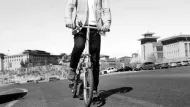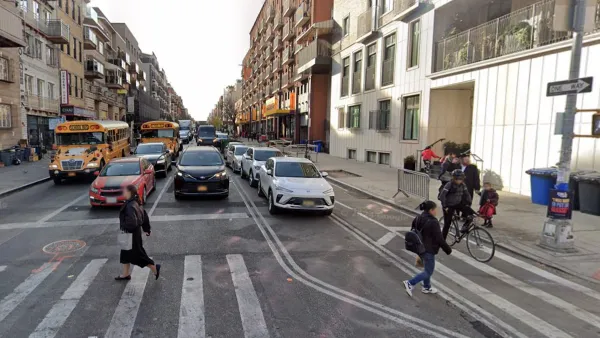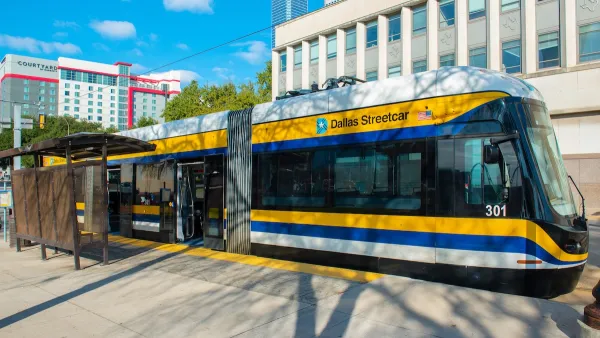Jim Kunstler once said that if the 20th Century was about getting around, the 21st Century is about staying in places worth staying in.
Jim Kunstler once said that if the 20th Century was about getting around, the 21st Century is about staying in places worth staying in. A prescient statement, it seems, as demographic, cultural, environmental, and economic trends continue influence the recovery of walkable urban neighborhoods where live, work, and play happen in close proximity. But despite ongoing, substantive market shifts, conventional city making processes continue to lag behind the demand for places worth staying in. Nonetheless, from Dallas to Brooklyn, Do it Yourself (DIY) urbanists are taking it upon themselves to institute place-based change at the scale urban dwellers understand best: the city block.
The Better Block Project
If you are a blogosphere surfing urbanist, then you have likely stumbled across "The Better Block Project." Carried out by Dallas, Texas urbanists Jason Roberts, Amy Cowan, and a cadre of local change agents, the Better Block effort takes (PARK)ing day one step further by effectively demonstrating how a simple vision and a little sweat equity can ably transform an auto-dominated city block into a vibrant, people-oriented neighborhood center-even if only for a single day. The installation, which cost less than $1,000 to produce, has gone viral across the country and may have seeded more permanent change in the Oak Cliff neighborhood. As always, a YouTube video speaks more than a thousand words:
DoTank:Brooklyn
DoTank:Brooklyn seeks to catalyze local intellectual capital. Yet, rather than dwell on navigating the myriad of political structures that eventually institute change, this informal group of Brooklyn based urban planners, artists, and public space advocates directly produce positive urban interventions at the block scale.
To date, DoTank: Brooklyn has created a digital community board, re-purposed work pallets into fully functional, zero waste urban Adirondack chairs, and have taken to sharing films of New York City's most seductive public spaces. Each project is designed to raise awareness and contribute to a better built environment. And like The Better Block Project, the work of DoTank: Brooklyn demonstrates how harnessing technology, ingenuity, and everyday community resources point the way towards realizing a more livable block, street, neighborhood, and city.
DoTank:Brooklyn - Chair bombingat North 5th and Berry from Aurash Khawarzadon Vimeo.
Whether a temporary café,or a sidewalk installation project, North American cities would do well to view these two efforts not as disruptive code violations, but as signs of true vitality; the presence of an engaged population; a reason to push a more progressive planning agenda; and a mandate to break through the conventional planning process to provide innovative and low-cost solutions that lead to long term, positive change.

Planetizen Federal Action Tracker
A weekly monitor of how Trump’s orders and actions are impacting planners and planning in America.

Restaurant Patios Were a Pandemic Win — Why Were They so Hard to Keep?
Social distancing requirements and changes in travel patterns prompted cities to pilot new uses for street and sidewalk space. Then it got complicated.

Maui's Vacation Rental Debate Turns Ugly
Verbal attacks, misinformation campaigns and fistfights plague a high-stakes debate to convert thousands of vacation rentals into long-term housing.

In California Battle of Housing vs. Environment, Housing Just Won
A new state law significantly limits the power of CEQA, an environmental review law that served as a powerful tool for blocking new development.

Boulder Eliminates Parking Minimums Citywide
Officials estimate the cost of building a single underground parking space at up to $100,000.

Orange County, Florida Adopts Largest US “Sprawl Repair” Code
The ‘Orange Code’ seeks to rectify decades of sprawl-inducing, car-oriented development.
Urban Design for Planners 1: Software Tools
This six-course series explores essential urban design concepts using open source software and equips planners with the tools they need to participate fully in the urban design process.
Planning for Universal Design
Learn the tools for implementing Universal Design in planning regulations.
Heyer Gruel & Associates PA
JM Goldson LLC
Custer County Colorado
City of Camden Redevelopment Agency
City of Astoria
Transportation Research & Education Center (TREC) at Portland State University
Jefferson Parish Government
Camden Redevelopment Agency
City of Claremont






























